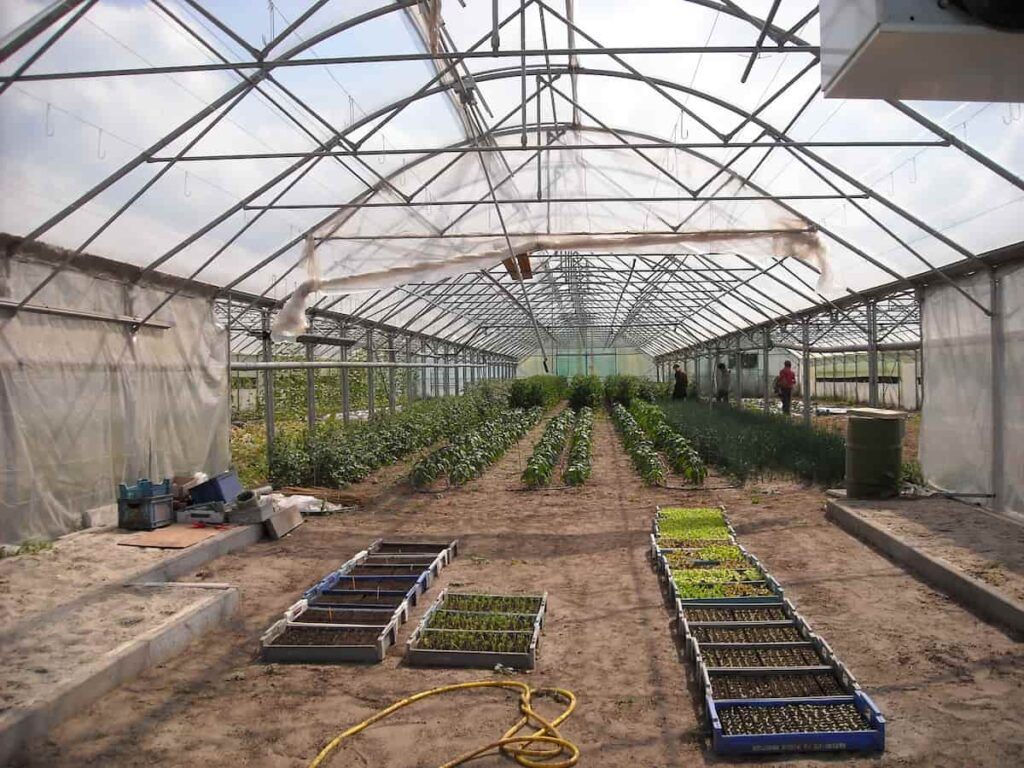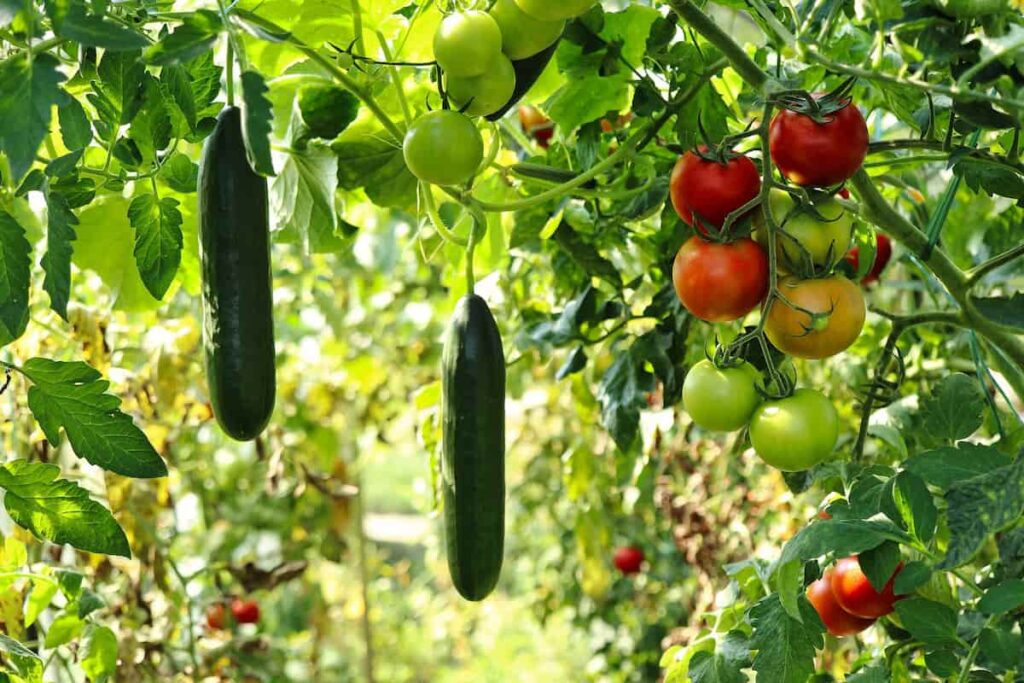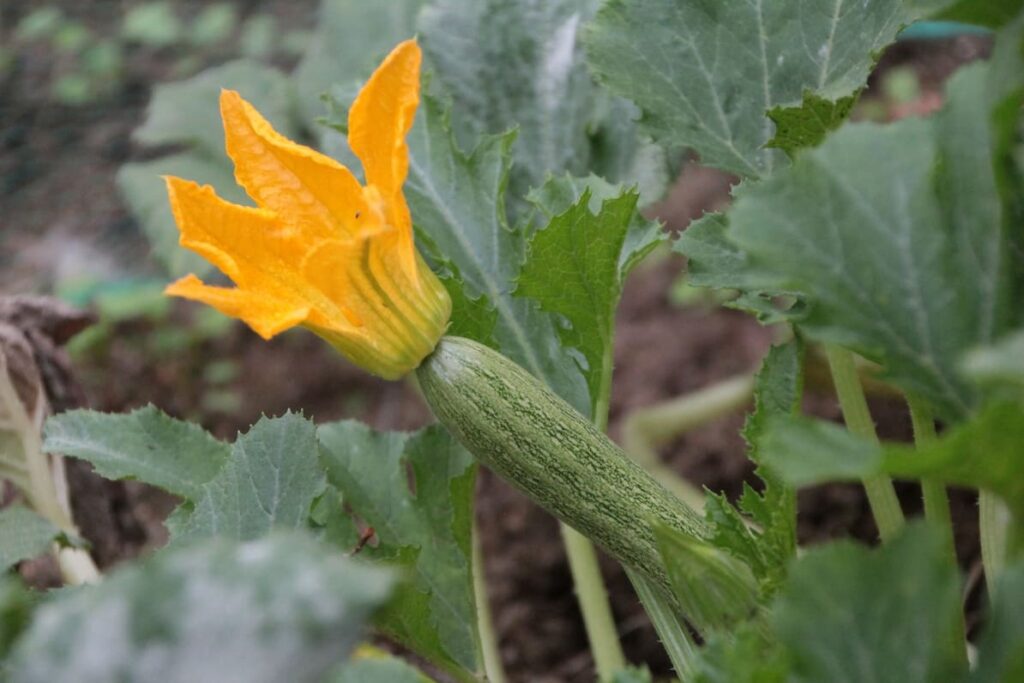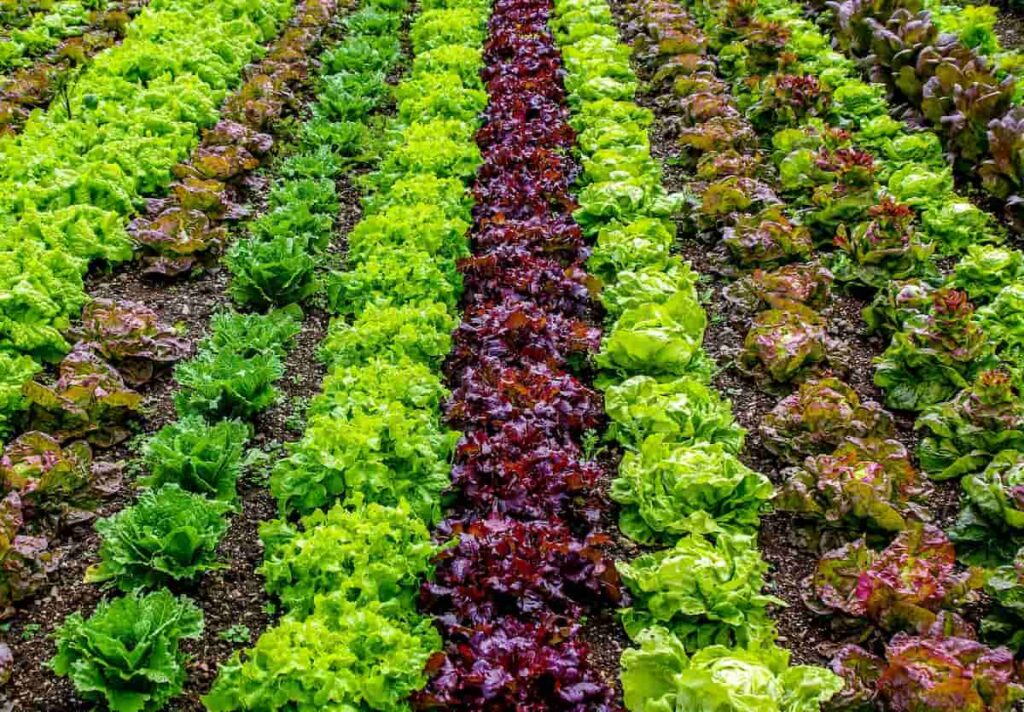Gardening is a fun and rewarding hobby but can also be much work. Gardening is a passion for many people, but it can take time to get started or to keep up with your garden once you have one. Your vegetable garden can quickly become overgrown and unmanageable if you’re not careful. Your garden can quickly become overrun with weeds, pests, and diseases if you’re not careful.

You can have the vegetable garden of your dreams with some planning and effort. In addition, planning will help you to save money on your overall gardening costs. There are key rules for effective vegetable garden management that will help you be successful.
47 key rules for effective vegetable garden management
Types of vegetable gardening
- Container Gardening –This gardening is done in pots or containers. It is a good option for those who do not have much space or want to grow their vegetables on a patio or deck.
- Raised Bed Gardening – This type of gardening involves growing vegetables in raised beds. The beds can be made from wood, stone, or other materials, and they are often elevated to make it easier to tend to the plants.
- Square-foot Gardening – This type of gardening gets its name because it is typically done in square-foot-sized plots. Plants are spaced out evenly in the plot so that each plant has enough room to grow.
- Vertical Gardening – This gardening type involves growing plants instead of out. It is a good option for those with limited space, such as on a balcony or a small patio.
Key rules for planning your effective vegetable garden management
- If your area has a long growing season, you can grow just about any vegetable. If your area has a shorter growing season, you must choose vegetables that mature quickly.
- You can grow a traditional in-ground garden with a large yard. You can grow vegetables in containers or raised beds with limited space.
- If you have energy and much time to devote to your garden, you can grow vegetables that require more care and attention. If you have limited time and energy, choose easy-to-care-for vegetables.
- Some vegetables are more expensive to grow than others. Choose the vegetables that fit your budget. Make sure to choose vegetables well-suited for your climate and soil type.
- Assess how much water your plants will need based on your area’s climate and soil type.
In case you missed it: When to Apply Organic Pesticides in Your Garden: Best Time, Safety Tips, and Precautions for Beginners

Key rules for preparing the soil for your effective vegetable garden management
- Preparing your soil is the most important step in effective vegetable garden management. Your soil determines how well your plants grow, how much water they need, and what nutrients they require. Before planting, you should choose the right type of soil and prepare it properly.
- There are three main soil types: sandy, clay, and loamy. Sandy soil is the easiest to work with; it drains well and warms up quickly in the spring. Clay soil is heavier and retains moisture better but can be more difficult to work with. Loamy soil is a mix of the two and is considered ideal for gardening.
- No matter what soil you have, it is essential to amend it with organic matter before planting. This will help improve drainage, aeration, and nutrient content. You can add organic matter to your soil by composting kitchen scraps and yard waste or purchasing bags of compost from the store. Spread a layer of organic matter over your garden bed and till it into the top 6 to 8 inches of soil before planting.
- When choosing garden soil, make sure to select a mix that is specifically designed for vegetables. Avoid using topsoil, as it can be too heavy and compacted for vegetables.
Choosing the best location for effective vegetable garden management
- When choosing the location for your vegetable garden, you should consider a few key factors to ensure its success.
- Ensure the place gets daily 6 to 8 hours of direct sunlight during the growing season.
- The ideal soil for a vegetable garden is loamy with sand, silt, and clay. It should be well-drained but also hold moisture well.
- You will need to water your garden regularly, so make sure the hose can reach you or you have a watering can on hand.
- Lastly, consider ease of access when choosing your location. You will be spending much time in your garden, so make sure it’s in a spot that’s convenient for you to get to.
In case you missed it: 13 Beneficial Insects for Your Garden: Best List for Your Plants

Planting tips for effective vegetable garden management
- Proper planting is the most important aspect of effective vegetable garden management. Proper planting will make your garden more productive and efficient, and you may spend more money than necessary on inputs.
- You should start with good-quality soil. This is the most important factor for determining the success of your garden. Make sure to amend your soil according to the results.
- Keep your vegetables close enough. They need room to grow, and crowding will only lead to problems down the road.
- Read the seed packet before planting. Plant your seeds at the correct depth and spacing. This will give them the best chance to germinate and grow into healthy plants.
Best watering methods for effective vegetable garden management
- Water your vegetable garden regularly and deeply. Use a hose or irrigation system to deliver water evenly to your plants. Apply water in the morning, so the leaves have time to dry before nightfall.
- Check the soil moisture level frequently and adjust your watering schedule accordingly. Mulch your garden to help conserve moisture and reduce weeds.
- Water is vital to the success of your vegetable garden. Without adequate moisture, plants will wilt, and fruits and vegetables will fail to develop.
- Water is at the base of plants, not on the leaves. Wet foliage promotes fungal growth and makes plants more susceptible to pests and diseases.
Best fertilizing tips for effective vegetable garden management
- When fertilizing your vegetable garden, you should follow a few key rules to ensure that your plants are healthy and thrive.
- Always purchase a high-quality fertilizer specifically designed for vegetable gardens.
- Apply the fertilizer evenly across the garden bed, avoiding over-fertilizing any area.
- Water your garden beds deeply and regularly after fertilizing to help the nutrients sink into the soil where the plants can access them.
In case you missed it: How to Add Nitrogen and Calcium to Your Garden Soil: A Must Guide for Gardeners

Weed control tips for effective vegetable garden management
- Weed control is critical for any vegetable garden, especially if you want to avoid using harmful chemicals. The first step is to prevent weeds from taking root by keeping your garden free of debris and dead plants. You should also regularly till the soil to uproot any existing weeds.
- If you do have weeds, you can remove them by hand or use a hoe to chop them down. You can also smother weeds with mulch or a thick layer of newspaper.
- Several herbicides can be effective against weeds, but read the label carefully and follow all instructions before using any chemical in your garden.
Pest control tips for effective vegetable garden management
- If you’re growing vegetables, you will deal with pests at some point. But don’t worry; plenty of ways to keep your garden pest-free.
- Regularly inspect your plants for signs of pests or damage. This way, you can catch problems early and take care of them before they get out of hand.
- Keep your garden clean and free of debris. This will help discourage pests from taking up residence in your garden.
- If you find pests, you can use several organic methods to eliminate them, such as diatomaceous earth or beneficial insects like ladybugs.
- There are several different strategies that you can use for pest control. One of the most effective is simply selecting plants resistant to the common pests in your area. Another strategy is to use physical barriers such as netting or fencing to keep pests away from your vegetables. If you need to use pesticides, follow the instructions on the label carefully.
In case you missed it: How to Make Compost Tea for Your Garden: Benefits to the Plants and Application Methods

Companion planting tips for effective vegetable garden management
- When it comes to gardening, there are a lot of different opinions on the best way to do things. But when it comes to companion planting, there are some general rules that most gardeners can agree on.
- Companion planting has several benefits, including pest control, plant nutrition, and weed suppression.
- Make sure you know the mature size of each growing plant. You don’t want your plants to crowd each other out as they grow.
- Consider the needs of each plant. Some plants need more water or sunlight than others. Make sure you place them accordingly.
- Be aware of what plants might compete with each other for resources like nutrients or water. You don’t want one plant to steal from another.
- Pay attention to which plants attract which pests or predators. You can use this knowledge to your advantage by placing trap crops next to plants susceptible to pests.
Harvesting tips for effective vegetable garden management
- Check your vegetables regularly. Some vegetables, like Tomatoes, can be harvested as soon as they’re ripe. Others, like Squash, must be left on the vine a bit longer. Check the individual vegetable species for guidance on when to harvest.
- A dull knife or pair of scissors will make harvesting more difficult and can even damage your vegetables. So be sure to use sharp tools when cutting through tough vegetable skins.
- Once you’ve cut the vegetable from its plant, handle it gently to avoid bruising or breaking it. Place fragile veggies in a basket or soft container to avoid any damage during transport. Following these simple tips ensures you’ll get the most out of your vegetable garden and have plenty of delicious, fresh produce to enjoy all season long.
In case you missed it: Balcony Grill Garden Ideas: Small Spaces, Apartments, and Best Plants to Grow on Grills

Crop rotation tips for effective vegetable garden management
- Crop rotation is one of the best rules for effective vegetable garden management. It helps to improve soil fertility, prevent disease and pests, and increase yields. When properly planned, crop rotation can also help extend the growing season and improve the overall health of your garden.
- You should consider a few things when planning your crop rotation. First, you need to choose crops that will benefit from being rotated. Some crops, like Tomatoes and Potatoes, do not need to be rotated because they are not heavy feeders. Others, like Corn and Beans, should be rotated yearly to keep them healthy.
- Second, you need to plan your rotation so that each crop is planted in a different garden area yearly. This will help to ensure that each crop gets the nutrients it needs and prevents diseases from spreading.
- Third, ensure that all your crops get the proper sunlight and water. Some crops, like Lettuce and Spinach, prefer cooler temperatures and less sunlight. Others, like Tomatoes and Cucumbers, need full sun and water. Be sure to provide each crop with what it needs to thrive. Following these simple rules, you can create an effective crop rotation system that will keep your garden healthy and productive for years.
Conclusion
Essential management practices should be followed to have a productive and cost-effective vegetable garden. By planning your garden layout and using efficient irrigation systems, you can reduce the amount of water and fertilizers needed. Additionally, crop rotation can help improve soil fertility and reduce the chance of disease and pests. By following these key rules, you can create a thriving vegetable garden that is easy on your wallet.
- How to Grow Tomatoes Organically at Home: A Comprehensive Guide
- Organic Gardening on a Budget: Low-Cost Methods and Materials
- Gongura Seed Germination and Planting Methods
- Cabbage Seed Germination and Selection
- Broccoli Seed Germination and Selection
- Asparagus Seed Germination and Variety Selection
- Seasonal Flower Gardening: Best Practices for Spring, Summer, Fall, and Winter
- How to Grow Hibiscus from Flower
- Plantation Ideas for Home Decoration: A Beginners Guide
- Flower Garden Designs and Layouts for Beginners
- Planting and Spacing Techniques in Papaya: A Beginner’s Guide
- Growing Gold: Essential Techniques for Planting Pineapples
- How to Make Kalanchoe Plant Bushy: Home Remedies and Solutions
- 11 Reasons Why Your Gardenia is Not Blooming: Home Remedies and Solutions
- Eco Elegance: The Guide to Designing a Drought-Tolerant Landscape
- Gardening on a Slope: Strategies for Hillside Landscaping
- Nourish and Flourish: Top Organic Mulches for Thriving House Plants
- Everything You Want to Know about Indian Mogra Flower: Discover Uses and Growing
- Green Thumb Success: Expert Tips for Cultivating Greenhouse Pumpkins All Year Round
- Maximize Growth & Flavor: The Ultimate Guide to Companion Planting in Herb Gardens
- How to Control Rhododendron Problems Naturally: Home Remedies and Organic Ways to Fix Them
- Natural Magic: The Remarkable Benefits of Cinnamon for Plants
- Best Steps to Revive Dying Tulip with Natural and Organic Treatment
- 10 Reasons Why Your Angel Trumpet is Not Blooming: Remedies and Treatment
- How to Fix Periwinkle Leaf and Flower-Related Problems: Natural Remedies and Solutions
- How to Fix Zinnias Leaf and Flower Problems: Discover Natural and Home Remedies
- Organic Steps to Induce Lemon Tree Flowers: A Comprehensive Guide
- Bloom Booster: Crafting the Perfect Homemade Bougainvillea Fertilizer
- Optimizing Growth: A Guide to Applying NPK Fertilizer for Potted Plants
- 10 Best Homemade Fertilizers for Rubber Plant: DIY Recipes and Application Method
- How to Boost Female Pumpkin Flowers: Effective Steps for More Flowers and High Yields
- Transform Your Indoor Garden: Top Benefits of Pink Salt for Houseplants
- 10 Best Homemade Fertilizers for Peacock Plants (Calathea): Easy DIY Guide
- Unlock Blooms: 9 Reasons Why Your Potted Chrysanthemum is Not Blooming
- 8 Reasons Why Your Potted Hibiscus is Not Blooming: Fix it with Simple Solutions
- Unlock Blooms: 9 Key Reasons Your Potted Frangipani Won’t Flower